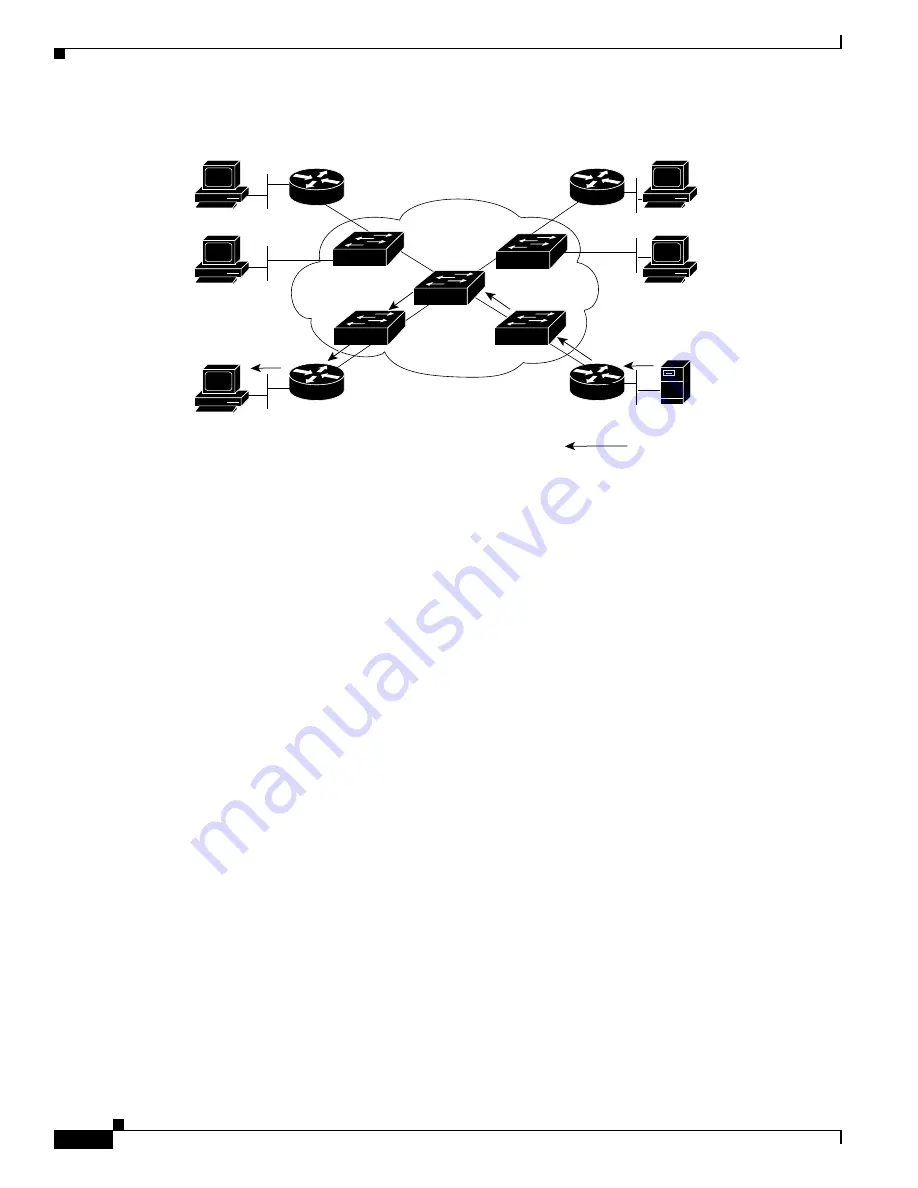
31-4
Cisco 7600 Series Router Cisco IOS Software Configuration Guide, Release 12.2SX
OL-4266-08
Chapter 31 Configuring PIM Snooping
Default PIM Snooping Configuration
Figure 31-4 Data Traffic Flow with PIM Snooping
Default PIM Snooping Configuration
PIM snooping is disabled by default.
PIM Snooping Configuration Guidelines and Restrictions
When configuring PIM snooping, follow these guidelines and restrictions:
•
When you use the PIM-sparse mode (PIM-SM) feature, downstream routers only see traffic if they
previously indicated interest through a PIM join or prune message. An upstream router only sees
traffic if it was used as an upstream router during the PIM join or prune process.
•
Join or prune messages are not flooded on all router ports but are sent only to the port corresponding
to the upstream router mentioned in the payload of the join or prune message.
•
Directly connected sources are supported for bidirectional PIM groups. Traffic from directly
connected sources is forwarded to the designated router and designated forwarder for a VLAN. In
some cases, a nondesignated router (NDR) can receive a downstream (S, G) join. For source-only
networks, the initial unknown traffic is flooded only to the designated routers and designated
forwarders.
•
Dense group mode traffic is seen as unknown traffic and is dropped.
•
The AUTO-RP groups (224.0.1.39 and 224.0.1.40) are always flooded.
•
The router snoops on designated forwarder election and maintains a list of all designated forwarder
routers for various RPs for the VLAN. All traffic is sent to all designated forwarders which ensures
that bidirectional functionality works properly.
•
PIM snooping and IGMP snooping can be enabled at the same time in a VLAN. Either RGMP or
PIM snooping can be enabled in a VLAN but not both.
Router C
Router D
Router B
Router A
RP Source
Receiver
Data
99475
SP network
G traffic
















































